Food and Beverages: Allied Market Research’s Top 5 Emerging Markets in Q1 2024

The Food and Beverages sector has witnessed major growth in the past few years which can be attributed to certain demographic, socio-economic, and technological factors. On the socio-economic front, the rising pace of urbanization across the globe has led to a growth in disposable incomes which is expected to help the sector flourish. Apart from this, the growing demand for fast foods, processed and packaged foods, and ready-to-eat foods is expected to introduce dynamic changes in the sector. Moreover, innovations and advancements in food processing and packaging technologies are projected to open up new opportunities in the industry.
Based on AMR’s in-house ‘Title Matrix Tool’, the top 5 markets in the food and beverages industry have been identified, that offer some of the best investment opportunities for businesses in this sector. For this purpose, the tool relies on the research parameters, current events, CAGR values, latest developments, and market revenue figures of the markets in the food and beverage sector and prioritizes them accordingly. Each of these top 5 markets is analyzed holistically in their respective research reports. These reports cover the industry size and forecast, along with the leading players in the sector. The retrospective data and futuristic outlook offered in the report help provide a detailed overview of the market.
Anti Inflammatory Tea
The global anti inflammatory tea market accounted for $2.1 billion in 2022 and is expected to gather a revenue of $3.6 billion by 2032, thus registering a CAGR of 5.5% in the 2022-2032 period. The growing awareness among consumers across the globe regarding the health benefits associated with anti inflammatory tea beverages is expected to push the market ahead. Moreover, an increase in the shift toward natural remedies is further predicted to augment the growth rate of this industry. The market research report covers different segments of this domain on the lines of type, packaging, and distribution channel.
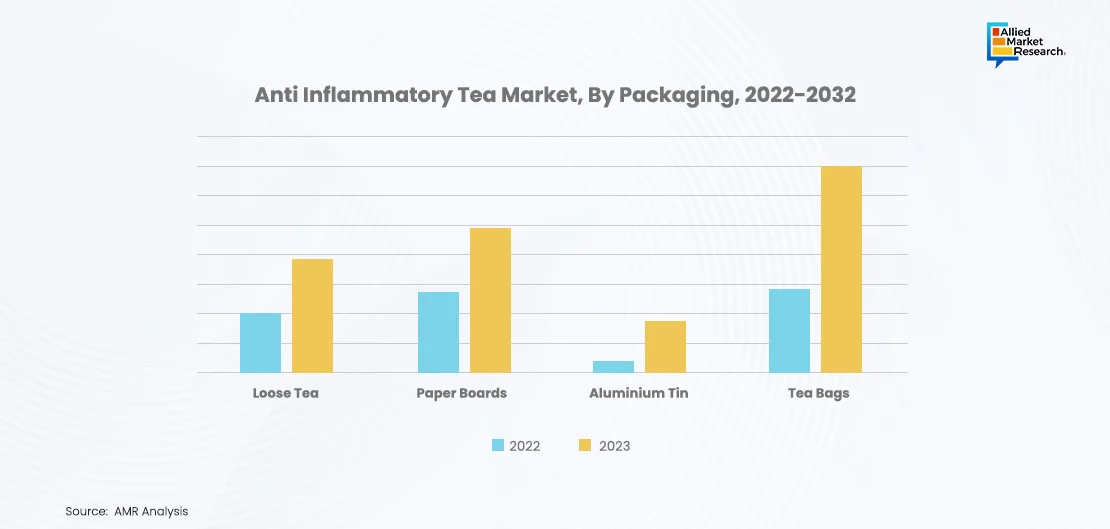
Based on packaging, the tea bags segment dominated the market in 2022 and is expected to flourish in the coming period. Tea bags offer a convenient solution for consumers to introduce anti inflammatory teas in their daily routines. Moreover, tea bags have a standardized format which helps consumers to gain precise control over the consumption of this herbal beverage.
The anti inflammatory tea industry has especially gained significance owing to the growing shift toward herbal and natural medications to boost bodily immunity. The segmental analysis offered in AMR reports helps businesses understand the areas they should focus on while investing in the market. Moreover, segmental analysis also aids companies in predicting the future course of the industry.
Ready-to-drink (RTD) Coffee Beverage
The ready-to-drink (RTD) coffee beverage industry is anticipated to experience tremendous growth on account of the growing on-the-go consumption habits of consumers around the world. Moreover, many leading beverage companies have launched innovative RTD coffee flavors which have quickly garnered huge demand across the globe. Due to these factors, the industry, which was valued at $33.0 billion in 2022, is set to amass a revenue of $53.5 billion by 2032, growing at a CAGR of 5% in the 2023-2032 period.
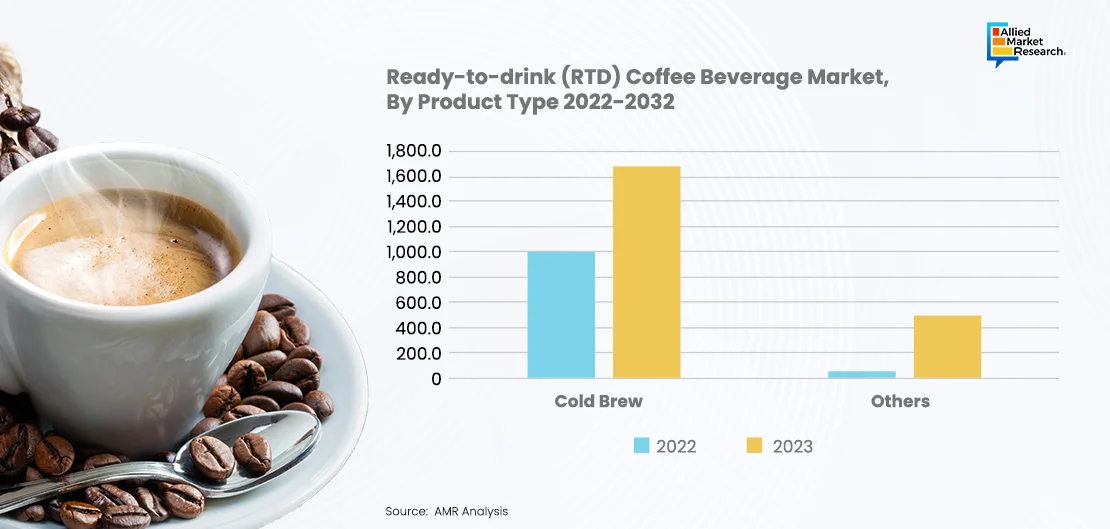
The market research report, to comprehensively cover every aspect of the industry, has studied every segment of the market based on packaging, product type, distribution channel, and cream content. Furthermore, each segment is further classified into sub-segments, and the growth drivers of every sub-segment are elaborated on in detail. For example, the cold brew coffee sub-segment of the product type segment is anticipated to be one of the most dominant in the coming period. The distinctive flavor, lower acidity, and smoother taste of cold brew RTD coffee have led to a surge in its popularity, thus helping the sub-segment to expand its market share.
The RTD coffee market is strategically important for the food & beverages industry as it highlights the consumption patterns of people across the globe. Along with this, the report also provides detailed profiling of the major companies in the market including La Colombe Coffee Roasters, Nestle SA, Suntory Beverage & Food Limited, Lotte Chilsung Beverage Co., etc. The report thoroughly studies the strategies adopted by these players which ultimately helps new entrants in the sector to understand the actions of the industry giants.
Coffee Concentrates
The growth of the global coffee concentrates market can be attributed to the fast-paced and busy lifestyle of individuals in an increasingly urbanized world. Due to this lifestyle, the demand for coffee concentrates as a rapid and convenient caffeine option has increased. Owing to this, the global coffee concentrates industry is anticipated to reach $3.6 billion by 2032; the industry was valued at $2.2 billion in 2022 and is set to register a CAGR of 5% in the 2023-2032 period.
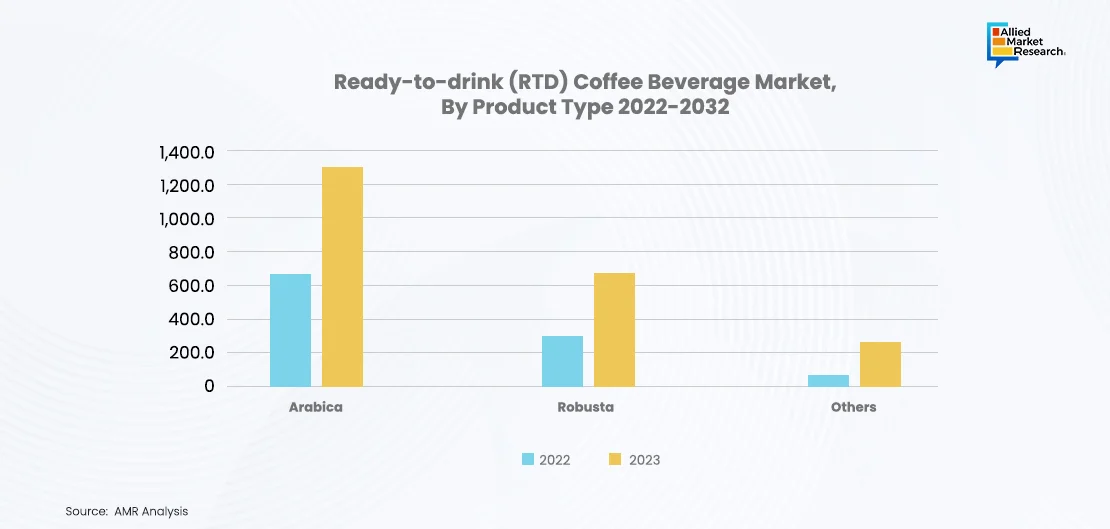
The segmental analysis reveals that the Arabica sub-segment is expected to provide lucrative growth opportunities to the businesses operating in the industry. Arabica coffee beans have gained widespread popularity owing to their refined aroma and high-quality flavor. Moreover, the caffeine content and acidity of Arabica coffee beans is lower than Robusta coffee beans which makes them perfect for people who are looking for low caffeine beverages.
Along with this, the report categorically mentions that the growth of the coffee concentrates market is crucial for the rise of the food and beverages sector. This is because the growth of the coffee concentrates industry is on account of consumption changes in coffee consumers who are looking for on-the-go caffeine options. Such changes, in the long run, impact the entire sector by bringing in new technologies and innovations. Also, in addition to the segmental analysis, the AMR report underscores the competitive scenario of the industry using scientific analytical tools such as Porter’s five forces. This helps the businesses operating in this industry to gauge where they stand in the sector and what measures they have to take to take a lead over their peers.
Cooking Spray
The global cooking spray market accounted for $9 billion in 2022 and is anticipated to surge ahead at a CAGR of 5.4% to reach $15 billion by 2032. The AMR report highlights that this industry's growth is due to the rise in dietary consciousness and growing focus on healthier cooking practices among people worldwide. Furthermore, the convenience and versatility offered by cooking sprays significantly reduce the time and effort required for cooking food items. This has made cooking sprays a popular kitchen equipment, thus helping the market to flourish.
The Allied Market Research report classifies the industry into various segments based on end-use, type, and distribution channel. A closer look at the end-use segment shows that the commercial use sub-segment is anticipated to gather the highest revenue in the forecast period. The main reason behind the dominance of this segment is the increasing adoption of cooking sprays by commercial enterprises such as restaurants, cafes, and catering services. These commercial enterprises use cooking sprays to ease food preparation and enhance food presentation.
Apart from the segmental analysis, the report also covers the major regions across the globe including North America, Europe, Asia-Pacific, and LAMEA. Since each region has its distinctive socio-economic, cultural, and demographic factors, the report studies each region separately and highlights the growth drivers and opportunities in every region. Furthermore, the report on the cooking spray market also mentions the significance of the industry from the perspective of the entire food and beverages sector. The report states that the growth of the market signals a rise in the health consciousness of people across the globe.
Collagen Casings
Just like most other sectors, the food and beverages industry, too, has witnessed a growing trend toward environmental sustainability. As a result, the food and beverages industry is gradually shifting toward sustainable and biodegradable packaging solutions to reduce the carbon footprint of the industry. This has led to an increase in the adoption of collagen casings, which are packaging materials manufactured using collagen made from animal hides. These casings have become quite popular as they are considered protein-rich and low-fat alternatives to synthetic casings.
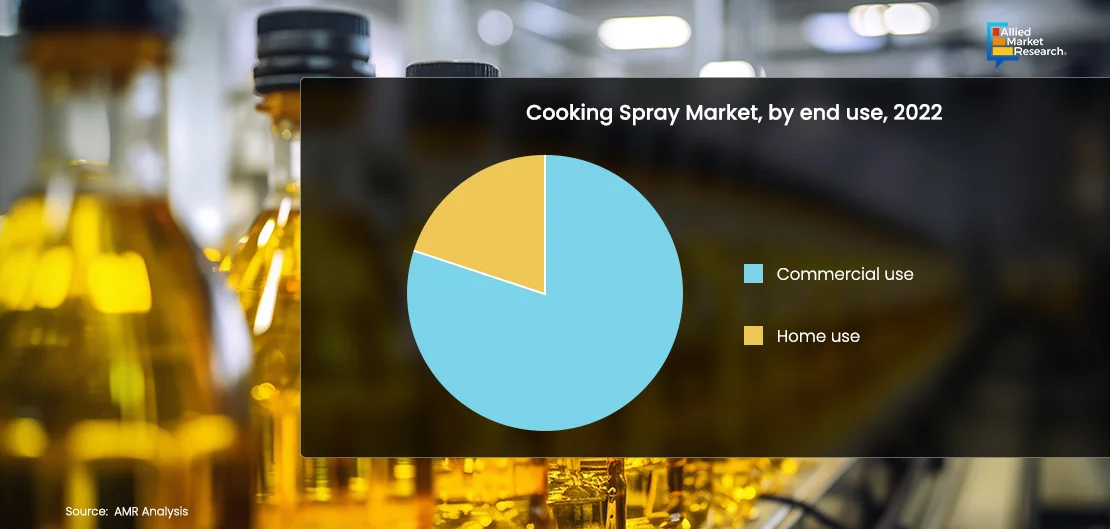
Based on the product type segment, the non-edible sub-segment of the collagen casing market is expected to witness a significant rise in its revenue share in the years to come. The growing preference for user-friendly and ready-to-eat products is predicted to be the main growth driver of this sub-segment. Furthermore, foods packaged with edible casings can be consumed directly without the need to peel off the casings. Thus, packaged food items with edible casings are much more convenient from the consumer’s point of view.
The growth of the collagen casings market is important for the food and beverages sectors as the industry’s growth marks a shift toward environmental sustainability. In the years to come this shift is anticipated to transform the entire food and beverages sector. Apart from this, the AMR report offers an in-depth analysis of various companies in the industry such as Shenguan Holdings (Group) Limited, Nitta Casings, Inc., Viscofan, S.A., etc. The report also covers mergers, acquisitions, partnerships, and collaborations in the industry to help businesses understand the changing dynamics of the market.
Strategic Insights into the Emerging Market in the Food and Beverages Industry
The Allied Market Research’s study on the top 5 emerging markets in the food and beverages industry helps businesses and companies to understand how the sector is evolving and thus chalk out their strategies accordingly. These emerging industries, by pointing out the areas where food and beverages companies should focus on, offer the best investment opportunities in this sector. For instance, the growth in the anti inflammatory tea industry signifies the increasing shift of consumers toward herbal and natural products for immunity boosting. Similarly, the rise of the Ready-to-drink (RTD) coffee beverage market and the coffee concentrates market signals the growing trend toward ready-to-eat foods and beverages due to the fast-paced lifestyle of the urban population. The expansion of the cooking spray industry, however, highlights the growing importance of food hygiene and presentation. The growing shift of the food and beverages industry toward environmental sustainability is underlined by the rise of the collagen casing market. Thus, the reports on these emerging industries do not just showcase their growth drivers but throw light on how businesses need to embrace the changing dynamics of the sector.
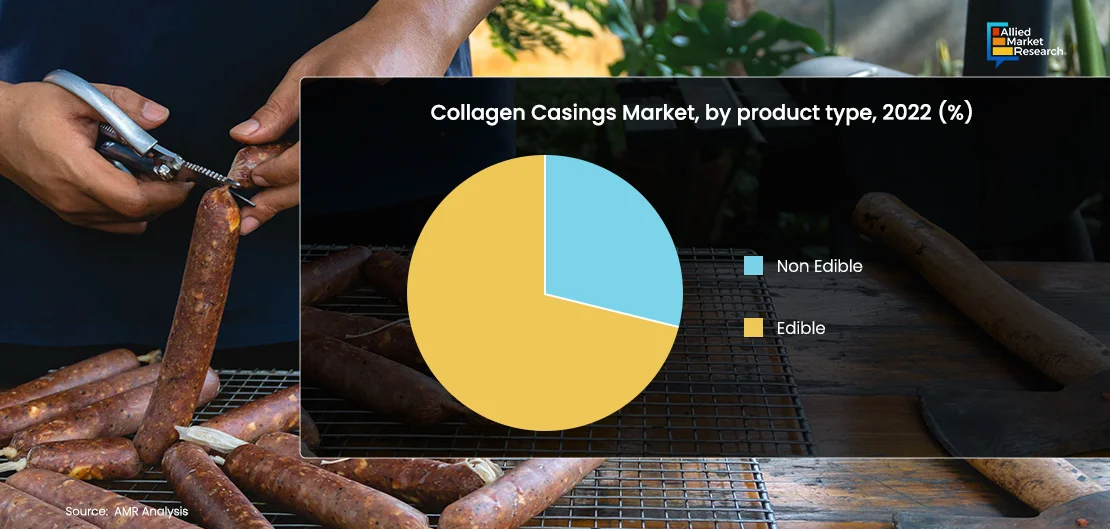
The Final Word
Allied Market Research, through its reports, thus provides a comprehensive picture of the food and beverages sector. With more than hundreds of markets in this domain alone, every aspect of the food and beverages industry is thoroughly covered through these reports. Using scientific analytical tools such as Porter’s five forces, the growth drivers and investment opportunities in each sector are analyzed and highlighted. Furthermore, to understand the demographic, socio-economic, and technological aspects, every region of the market is studied in detail. Also, a huge emphasis is laid on helping businesses understand the competitive scenario of the industry; for this, the leading companies in the industry are profiled and their growth strategies are analyzed holistically. The trends and latest developments in the market are also touched upon to aid businesses in taking the lead over their peers. For deeper insights into the food and beverages industry, contact our experts.



